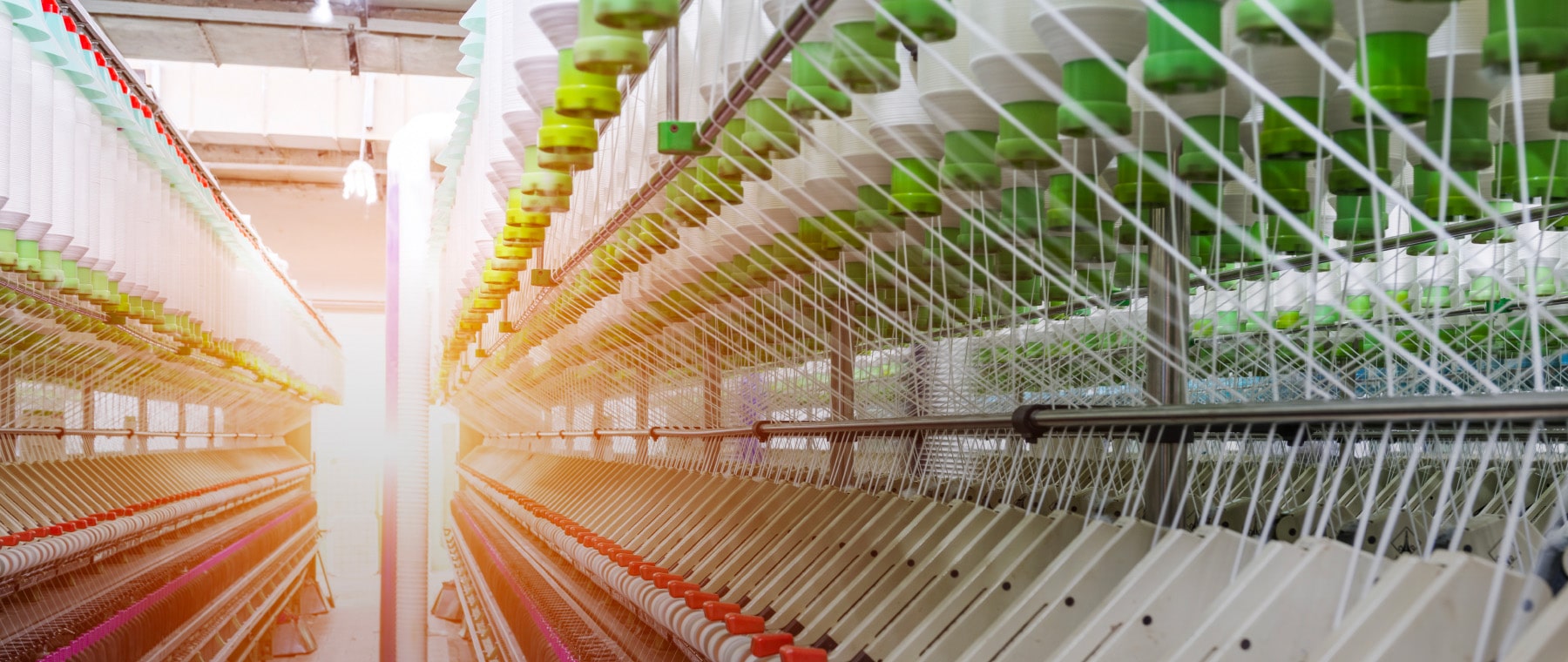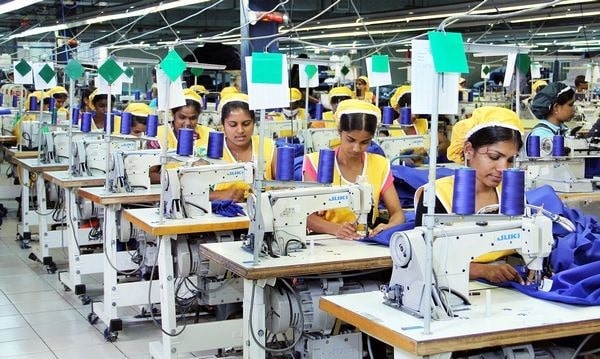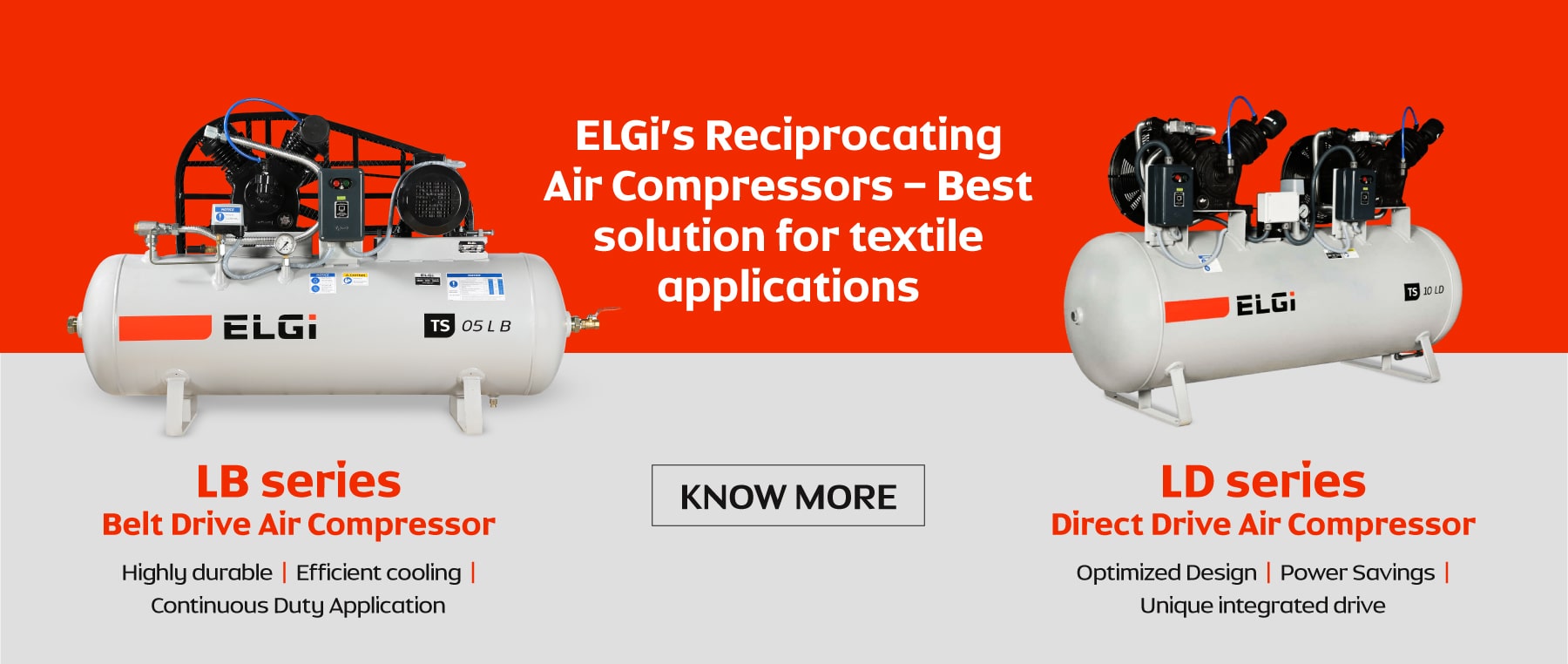Consultant - Screw compressorA STITCH IN TIME INDEED SAVES NINE!

The ready-made garment production industry is labor-intensive and has a fragmented supply chain. At a broader level, it starts with fiber selection, yarn and fabric production, and then, garment manufacturing.
Major operations of the ready-made garment industry fall under these three categories:
- Pre-production
- Production
- Post-production
Pre-production: This phase involves arranging materials, line planning, sample development and approval, sourcing, and production scheduling.
Production: During production, fabrics are spread, cut, bundled, and sewn.
Post-production: Post-production includes inspection, pressing, folding, and packing, making the garment ready to sell.
The labour dependent nature of cutting and sewing makes the readymade garment expensive. Fabric costs and cut-and-sew costs are two of the largest expenses in garment manufacturing. While raw materials contribute up to 50 to 60% of the total product cost, sewing contributes approximately 35% of the total cost.
Efforts have been made to lower labour costs through supply chain management by locating production facilities in developing countries like India, Bangladesh, etc. However, this strategy is becoming complex and difficult to sustain, forcing the industry to find alternative solutions. Thus, automating ready-made garment manufacturing processes are becoming the need of the hour!
Automation not only improves productivity, but also the quality of the finished product by minimising human intervention and preventing errors. Some of the automated techniques adopted by the industry includes:
- Mechanised fabric handling
- Computerised cutting
- Automatic sewing
- Use of robots
Compressed Air and the Garment Industry
“Compressed Air” plays a critical role in ensuring effectiveness of sophisticated automated machinery, helping manufacturers overcome persistent challenges like:
- Maximising uptime and productivity to meet demands
- Reducing operational and maintenance costs
- Preventing contamination due to air, water, and oil mixture
Automation in Sewing:
Sewing is the most important process but is still dependent on highly skilled labour for operations. With increase in labour costs, shortage of skilled labour, and ever-changing consumer behaviour pushed by fast fashion trends, the garment manufacturing industry is forced to strive for automated sewing.
Compressed air is critical for seamless sewing operations in functions like:
- The Presser Foot: It works with the feed to move fabric evenly through the machine. Air is used for lifting and lowering the presser foot for quicker action and improved productivity compared to manual control.
- Thread Trimmer: Excess thread must be trimmed post a stitching, before proceeding to further operations. Controlled by the compressed air system, a pneumatic chain-off thread suction device cuts the thread chain and collects dust. Compared to the conventional system of cutting the thread with scissors, these devices dramatically increase operational efficiency.
- Cleaning: Air is used for cleaning the stitching points at regular intervals to remove lint and dust from building up in the oil ports which form the lubrication system for the needle and presser foot.
- Needle Cooling: Needle cooling with compressed air increases productivity by facilitating continuous operation, unlike conventional machines which have to be stopped at regular intervals to let the stitching point cool.
How critical is Compressed Air in a sewing unit?
The stitching industry is moving towards three important aspects:
- Quality
- Productivity
- Energy Efficiency
It is imperative to invest in the right compressed air system to achieve the right quality of finished garment, improve productivity to maximise revenue and reduce energy costs and increase return on investment.
The quality of compressed air directly affects the end product. Missed stitches, damages to cloth, oil stains and lint are key sources of quality inhibitors.
Higher temperature of compressed air leads to slipped and staggered stitch.
Presence of moisture in compressed air causes corrosion over a period, leaving the stitching unit with no choice than to replace the entire system.
Contaminated compressed air causes oil stains to mix with the fabric and thread, leading to oil patches in the product and lint deposits in the needle.
Without compressed air cooling the stitching point, the machine must be stopped at regular intervals before resuming stitching. In the absence of compressed air, excess thread must be trimmed manually, costing 40% to 50% additional time for each piece of clothing.
Productivity can be increased considerably with the aid of compressed air.

Stitching units are growing in size, in terms of the number of stitching cells and have started looking at energy efficiency as one of the key parameters during machine procurement. For smaller stitching units using piston compressors, the energy consumed accounts to at least 30% of their total electricity cost.

ELGi’s reciprocating compressors are highly reliable; ensuring highest air quality, minimum downtime, and low life cycle costs.
With ELGi’s two-stage reciprocating compressor, a sewing unit operating 25 sewing machines can easily save up to 9% of their annual energy cost!
A leading Textile Company in Tiruppur uses ELGi’s reciprocating compressors in their cutting, sewing, embroidery, and printing division.
They claim that their production is now “seamless and without any niggles” and that they are clearly able to differentiate ELGi’s product quality compared to the compressor that they were using earlier. They consider ELGi as a “partner” offering not only a reliable product, but also excellent after-sales support.
With the right equipment, even the most difficult challenges can be turned into a profit-generating opportunity. By selecting the right brand and type of compressor to meet air demand and air quality; coupled with proper downstream equipment and FRL units, ready-made garment manufacturers can eliminate the root causes affecting the quality of the garment, improve productivity, and save considerable energy cost.
